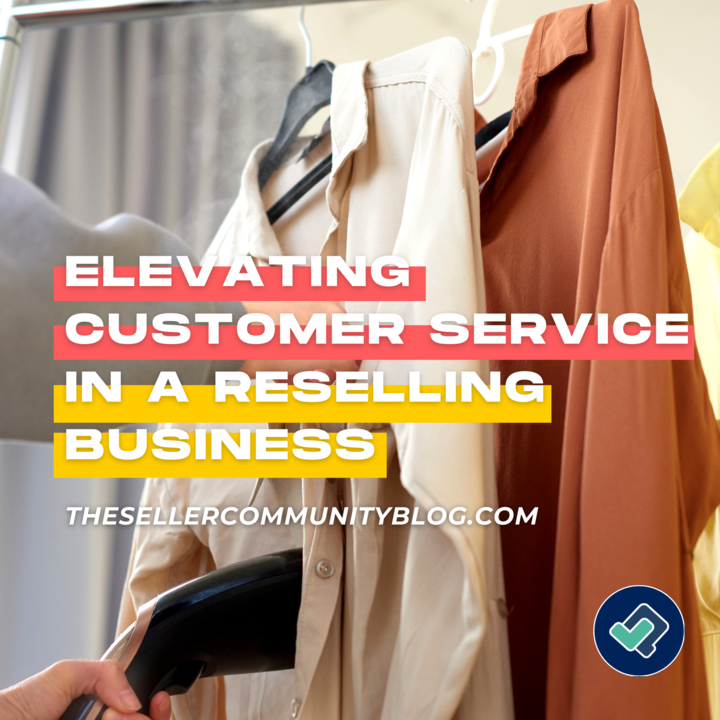Estimated reading time: 3 minutes
In today’s competitive online marketplace, providing exceptional customer service is not just an option; it’s necessary for resellers aiming for long-term success. Whether you’re selling pre-loved clothing on Poshmark, unique finds on eBay, or hand-picked treasures on Mercari, understanding your customers and exceeding their expectations can set you apart from the competition.

Identifying your target customer base
Knowing who you’re selling to is the first step towards offering personalized service that resonates with your buyers. If you specialize in a particular niche, like used clothing, you likely have a more defined customer base. For instance, reselling mall brand budget-priced items might attract females aged 25 to 45 who value budget-friendly, eco-conscious shopping options. These customers are looking for great deals on platforms like eBay and Poshmark, where they can find a wide selection and enjoy buyer-friendly return policies.
Tailoring your approach to meet the needs and preferences of your target audience can significantly enhance their shopping experience with your store. Look at what you sell and who may be buying from you. Vintage items? Maybe someone is buying back their childhood. Car Parts? Maybe a frugal DIY kinda guy.
Understanding customer needs and expectations
Feedback and ratings are invaluable resources for understanding what your customers value most and where there’s room for improvement. Using eBay as an example negative feedback, while disappointing, offers a clear perspective on your business from the customer’s viewpoint. A neutral review complaining about an item never arriving but acknowledging prompt refund and communication underscores the importance of follow-up. It’s a reminder that the transaction doesn’t end with a sale or a refund; it ends when the customer is completely satisfied. This approach not only helps in retaining customers but also in building a loyal customer base since acquiring a new customer is often more expensive than retaining an existing one.

Navigating different platform expectations
Each reselling platform has its own set of rules and expectations regarding returns, which can significantly impact customer satisfaction. For example, eBay allows individual stores to set their return policies but tends to favor buyers in disputes. Offering a generous return policy can enhance your store’s rating and visibility. On the other hand, Poshmark and Mercari are more restrictive with returns, usually not allowing for buyer’s remorse as a valid reason. Understanding these nuances and clearly communicating your return policy can help manage customer expectations and reduce dissatisfaction.
Responding to online reviews and feedback
Engaging with customer feedback is crucial for maintaining a positive online presence. Thanking customers for their feedback shows that you value their input and are dedicated to improving. Addressing specific points, whether positive or negative, demonstrates attentiveness and a genuine interest in their satisfaction. Offering solutions and taking responsibility for any issues can turn a negative experience into a positive one, potentially winning back dissatisfied customers.
Moreover, highlighting improvements based on feedback shows a commitment to excellence and continuous improvement. Personalizing responses and inviting further communication can make customers feel valued and heard, further enhancing their loyalty to your store.
Example from real life
Consider the case of receiving negative feedback regarding a scarf with unexpected silver metallic threads. A thoughtful response offering free returns and expressing regret over the customer’s dissatisfaction illustrates a proactive, customer-first approach. It’s an opportunity to reassure the customer of your commitment to accuracy and satisfaction, potentially turning a negative experience into a positive one.
Conclusion
In the reselling business, where competition is fierce, and customer loyalty is gold, providing outstanding customer service can make all the difference. By understanding your target audience, addressing their needs and expectations, navigating platform-specific policies wisely, and engaging constructively with feedback, you can build a reputable, customer-centric brand. Remember, the goal is not just to sell but to create positive, lasting relationships with your customers, fostering a loyal community that returns time and again.





